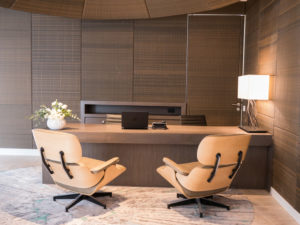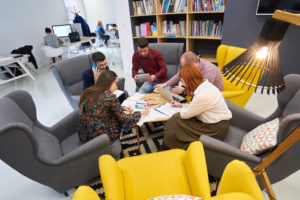The Latest Trend to Sweep Offices Across the Globe
 The brainchild of Herman Miller, the concept of the living office is characterised by a high-performing workplace that presents employees with quality work experience and helps businesses to achieve their long-term goals.
The brainchild of Herman Miller, the concept of the living office is characterised by a high-performing workplace that presents employees with quality work experience and helps businesses to achieve their long-term goals.
Think of it as an improvement of the standard office space, one that provides your staff with all the best tools to be able to do their job effectively and productively on a daily basis. That being said, the concept is certainly far from a “one size fits all” approach; the Living Office recognizes that individuals and organisations have unique needs, goals and characteristics and caters accordingly.
Multiple factors are taken into consideration when designing an office layout according to this revolutionary concept, however the most essential is undoubtedly the people who make use of the space.
Most business owners will acknowledge the importance of productive taskforce as imperative to the success of their business. However, many people get distracted and find it difficult to exercise maximum productivity on a regular basis. Here’s where the Living Office comes in; far from just making offices look stylish, the emphasis is on functionality and creating an interactive hub which encourages productivity and engagement.
These are some points to consider if you’re thinking about implementing the Living Office concept in your workplace.
Recreational Spaces
 Since the Living Office concept ultimately seeks to bridge the gap between work and home environments, the way companies organise the recreational spaces of the office is a key aspect. A Living Office layout should be responsive and offer employees not just one main area but several separate spaces in order to encourage movement throughout the day and prevent a feeling of stagnation. Hence, lounge areas should be especially relevant since they should offer the option of taking a break from work to clear the mind. Moreover, they should provide the opportunity for small groups to come together and discuss issues in a more casual manner, rather than over a stuffy boardroom desk.
Since the Living Office concept ultimately seeks to bridge the gap between work and home environments, the way companies organise the recreational spaces of the office is a key aspect. A Living Office layout should be responsive and offer employees not just one main area but several separate spaces in order to encourage movement throughout the day and prevent a feeling of stagnation. Hence, lounge areas should be especially relevant since they should offer the option of taking a break from work to clear the mind. Moreover, they should provide the opportunity for small groups to come together and discuss issues in a more casual manner, rather than over a stuffy boardroom desk.
Choice of Furniture
Miller claims that office furniture and tools can help or hinder your organisation’s success: “Equip your people do great things – so your organisation will too”. Giving your staff the right tools to meet the goals of the organisation means considering and implementing the right furniture specifically tailored to meet these needs. This includes everything from your choice of desk chairs to the fabrics of your upholstery, as well as the size and shape of desks and other workspaces. Surfaces and materials selected should enhance natural light within the office and make employees feel comfortable and in turn, empowered.
Corporate Image
According to research, every organisation should attempt to foster a “sense of community and well-being” as one of the key priorities of its company culture. The Living Office concept caters to this priority; through each of its ten proposed settings, organisations may choose to implement a different level of social support to their staff and the inherent groups within it.
Additionally, the outcome should reflect an organisation’s unique corporate image sending a clear message to both employees as well as visiting clients.
Colour, Air and Light
 Choosing a colour scheme for every aspect of the office space may seem frivolous and superficial but it’s actually an important factor that can enhance or hinder productivity. Implementing a good colour scheme throughout the office in terms of walls and furnishings can boost employee’s moods and generate creativity.
Choosing a colour scheme for every aspect of the office space may seem frivolous and superficial but it’s actually an important factor that can enhance or hinder productivity. Implementing a good colour scheme throughout the office in terms of walls and furnishings can boost employee’s moods and generate creativity.
Moreover, proper lighting and air ventilation also greatly contribute to employees’ well-being and should be easily able to be manipulated from one device such as a tablet or pc for maximum effectiveness.
In a nutshell, the Living Office was created with the intention to support and enhance employees’ needs for flexible communication, innovation and productivity and reflects the cultural and technological changes of the 21st century in relation to how people work. This evolution in the modern workspace is already making waves across the globe and looks set to continue being integrated into many companies’ long-term visions of better functioning workplaces.




